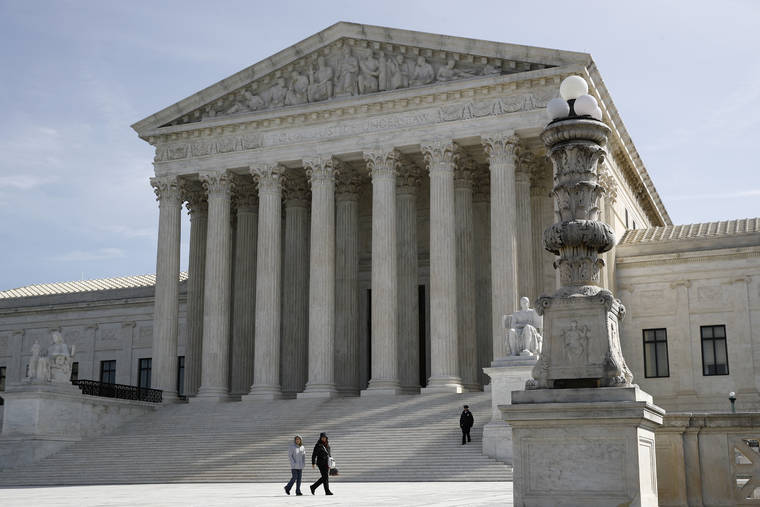WASHINGTON — The Supreme Court ruled Thursday the Clean Water Act applies to some pollutants that reach the sea and other protected waters indirectly through groundwater.
The case, County of Maui v. Hawaii Wildlife Fund, No. 18-260, concerned a wastewater treatment plant on Maui that used injection wells to dispose of some 4 million gallons of treated sewage each day by pumping it into groundwater about a half-mile from the Pacific Ocean. Some of the waste reached the ocean.
Environmental groups sued, calling it “the clean water case of the century.” A ruling in favor of the treatment plant “would open a massive loophole for every polluter in the country to avoid regulation,” David L. Henkin, a lawyer with Earthjustice, said in November.
In the Supreme Court, the Trump administration filed a brief supporting Maui County, which operates the treatment plant, saying that the law does not apply to discharges that travel through groundwater before reaching protected waters.
In a 6-3 ruling, the court rejected what it called the extreme positions advanced by the parties and the administration, returning the case to an appeals court for reconsideration under a new standard. But the decision was on balance a victory for environmental groups, as it allowed at least some lawsuits over groundwater discharges.
“This decision is a huge victory for clean water,” said Henkin, who argued the case on behalf of environmental groups. “The Supreme Court has rejected the Trump administration’s effort to blow a big hole in the Clean Water Act’s protections for rivers, lakes and oceans.”
The Clean Water Act requires “point sources” of pollution to obtain permits for “any addition of any pollutant to navigable waters.” Failing to have a permit can subject polluters to daily fines of more than $50,000.
Justice Stephen Breyer, writing for the majority, rejected both sides’ positions in the case as too extreme. The county and the Trump administration had argued discharges into groundwater were never covered, while environmental groups suing the county said the law applied to discharges that “actually and foreseeably reach navigable surface waters.”
In dissent, Justice Clarence Thomas, joined by Justice Neil Gorsuch, said the law applied “only when a point source discharges pollutants directly into navigable waters.”
In a separate dissent, Justice Samuel Alito wrote that the majority opinion “makes up a rule that provides no clear guidance and invites arbitrary and inconsistent application.”
© 2020 The New York Times Company

